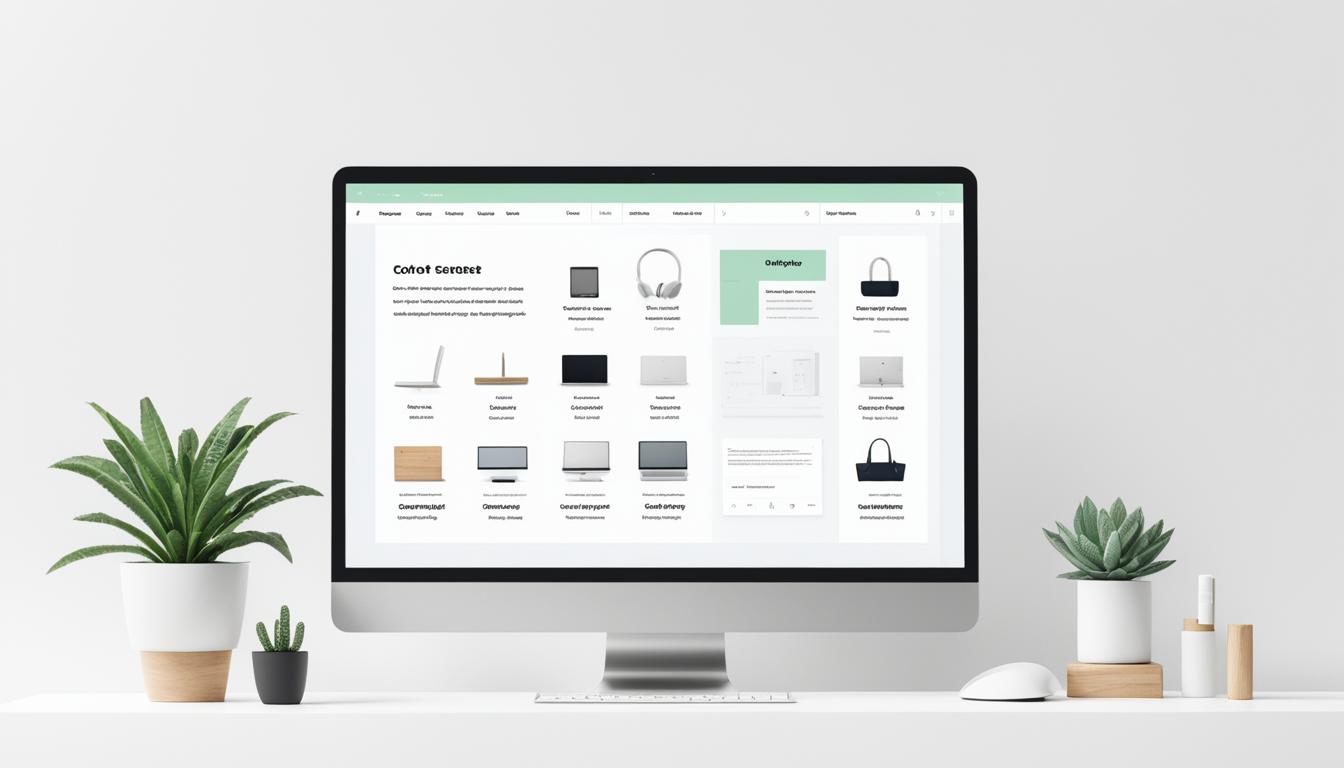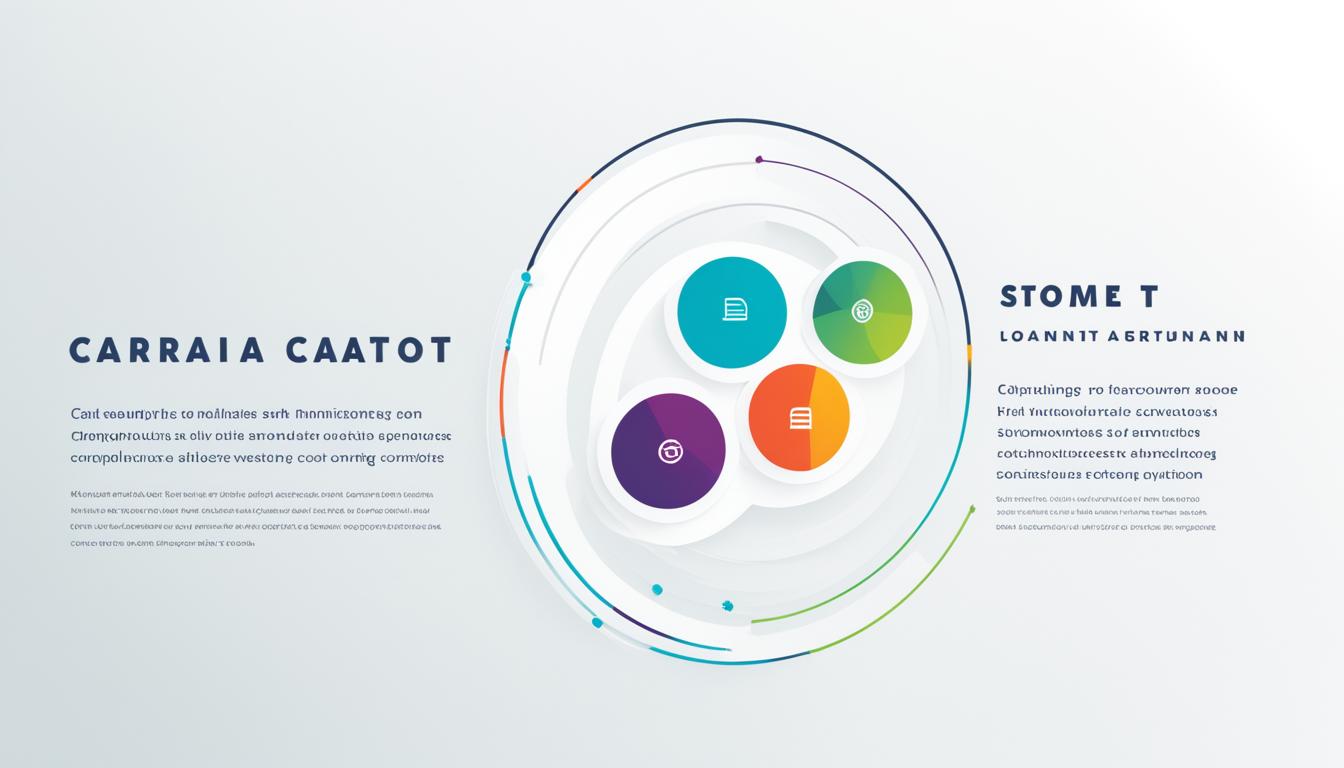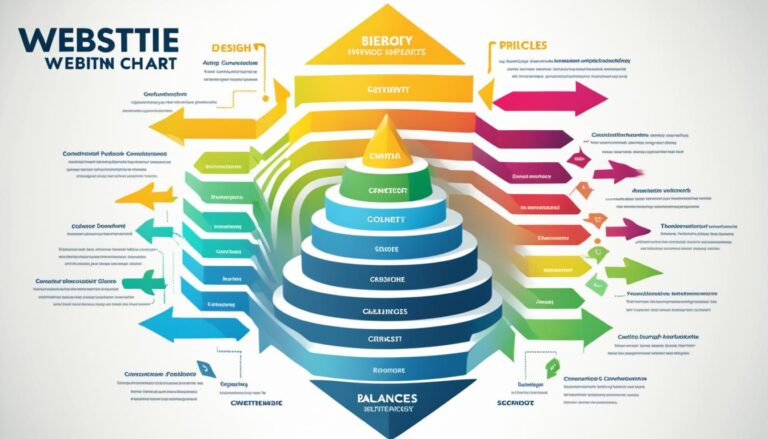Designing Your Own Website: A Step-by-Step Guide
Building a website is crucial for businesses in today’s digital landscape. It allows businesses to expand their reach, develop their brand, and stay competitive. While building a website may seem daunting, it is possible to create a straightforward business website yourself with the right preparation.
In this section of our comprehensive guide, we will outline the step-by-step process to design your own website from scratch. Whether you are a small business owner, a freelancer, or an entrepreneur, this guide will provide you with the necessary knowledge and tools to confidently embark on your website design journey.
By following this step-by-step guide, you will learn about the essential skills required for website development, how to establish clear goals for your website, and the process of choosing a hosting provider and domain name. We will also cover selecting the right site template or layout, building relevant pages, establishing a payment system, testing and fine-tuning your site, and promoting your website.
Are you ready to take your online presence to the next level? Let’s dive in and design your own website!
Skills and Setting Goals for Your Website
Before embarking on the website design process, it is essential to possess the necessary website development skills. These skills will enable you to create a website that is both visually appealing and functional. Proficiency in coding languages such as JavaScript and HTML/CSS is vital for implementing interactive elements and styling the website’s layout. Additionally, troubleshooting and debugging skills are crucial for addressing any technical issues that may arise during the development process.
Moreover, having knowledge of search engine optimization (SEO) techniques can greatly enhance your website’s visibility on search engine results pages. SEO involves optimizing your website’s content, keywords, and meta tags to attract organic traffic and improve your search engine ranking.
Considering the complexity of web development, it is also beneficial to have a comprehensive understanding of both front-end and back-end development. Front-end development focuses on the visual and interactive aspects of a website, such as user interfaces and user experience design. Back-end development involves managing and organizing data, server-side programming, and database integration.
Once you have honed your website development skills, it is crucial to set clear goals for your website. Defining the purpose and objectives of your website will provide a roadmap for its design and functionality. Consider the long-term goals you wish to achieve through your website, the desired user experience you want to create, and the specific metrics you aim to track to measure its success.
Establishing a clear goal will help you blueprint the site’s interface, aesthetics, and potential pages. It will guide you in making informed decisions regarding the layout, content, and features of your website. Additionally, having a defined goal will enable you to align your website design with the overall marketing strategy of your business.
The Importance of Website Goals
“Goals provide focus. Goals provide direction. Goals provide a clear purpose. Without them, you lack a benchmark against which you can measure your website’s success.”
By setting website goals, you can ensure that your website aligns with your business objectives and delivers tangible results. Whether your goal is to increase brand awareness, generate leads, drive sales, or provide valuable online content, establishing a clear purpose will enable you to create a website that effectively fulfills those objectives.
In conclusion, developing the necessary website development skills, including coding, troubleshooting, and SEO, is essential for designing a successful website. By setting clear website goals, you can ensure that your website’s design and functionality align with your business objectives and provide a meaningful user experience.
Choosing a Hosting Provider and Domain Name, and Building Relevant Pages
One of the crucial steps in building a website is selecting a hosting provider. The hosting provider you choose should align with your site’s needs and goals, considering factors such as site structure and usability. Many hosting platforms offer complimentary domain registration and discounted website building tools, making it easier for you to get started.
Once you have chosen a hosting provider, the next step is to select a domain name for your website. Your domain name should be memorable, impactful, and relevant to your business or brand. A well-chosen domain name can play a significant role in attracting visitors and establishing your online identity.
After you have secured a hosting provider and a domain name, it’s time to choose a site template or layout. The site template should reflect your vision for the website and should include the necessary functionality to support your goals. Whether you prefer a sleek and modern design or a more traditional layout, there are numerous templates available that can be customized to suit your needs.
Building relevant pages is the next crucial step in website design. You need to consider the user journey and structure your pages accordingly. Each page should be easily accessible and navigable, providing users with the information they are seeking quickly and effectively. By creating relevant pages, you can enhance the user experience and increase engagement.
By choosing the right hosting provider, securing a memorable domain name, selecting an appropriate site template, and building relevant pages, you can establish a strong foundation for your website. These steps form the backbone of your website’s design and are fundamental to its success.
Conclusion
Designing your own website may initially seem like a daunting task, but with the right tools and knowledge, it can be a manageable and rewarding process. By following the step-by-step guide outlined in this article, you can create a professional website that reflects your business goals and provides a positive user experience.
To start, it’s important to hone your web development skills, particularly in coding languages like JavaScript and HTML/CSS. Having a solid foundation in troubleshooting, debugging, and search engine optimization (SEO) will also benefit your website’s performance and visibility in search engine rankings.
Next, establish clear goals for your website, considering its long-term purpose, desired user experience, and metrics you want to track. This will help you make informed decisions in terms of site structure, aesthetics, and the pages you need to include to achieve your objectives.
Remember to choose a reliable hosting provider that aligns with your needs and goals. Select a domain name that is memorable and relevant to your business, and choose a site template or layout that reflects your vision and encompasses the necessary functionality. By building relevant pages that are easily accessible and navigable, you can provide users with the information they need quickly and effectively.
Once your website is built, take the time to test and fine-tune its performance. Ensure that all links and features are working properly, and optimize your site for speed and user-friendliness. Finally, don’t forget to promote your website to your target audience through various marketing channels to establish a strong online presence for your business.
By following these steps and approaching website design with determination and attention to detail, you can successfully design your own website and set your business up for digital success.
FAQ
What skills do I need to design my own website?
To design your own website, you will need skills in web development and coding, including languages like JavaScript and HTML/CSS. Troubleshooting and debugging skills, as well as knowledge in search engine optimization (SEO), are also important. Front and back end web development skills can be beneficial as well.
How do I establish goals for my website?
To establish goals for your website, consider its long-term purpose, desired user experience, and metrics you want to track. Having a clear goal will help you plan the site’s interface, aesthetics, and potential pages.
How do I choose a hosting provider and domain name?
When choosing a hosting provider, consider your needs and goals for the site, including factors like site structure and usability. Look for hosting platforms that offer complimentary domain registration and discounted website building tools. After choosing a hosting provider, select a domain name that is memorable, impactful, and relevant to your business.
How do I build relevant pages for my website?
Building relevant pages involves structuring and ordering them in a manner consistent with your intended user journey. Each page should be easily accessible and navigate, providing users with relevant information quickly and effectively.
How can I design my own website with the right tools and knowledge?
By following the step-by-step guide outlined in this article, you can design your own website. Hone your web development skills, establish clear goals, choose a hosting provider and domain name, select a site template, build relevant pages, test and fine-tune your site, and promote it to your target audience. With determination and attention to detail, you can create a website that reflects your business goals and provides a positive user experience.










